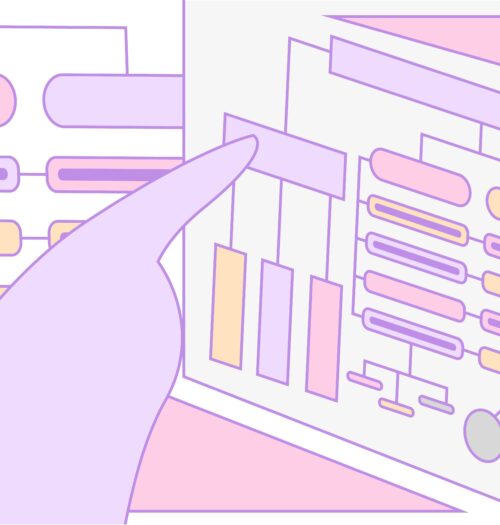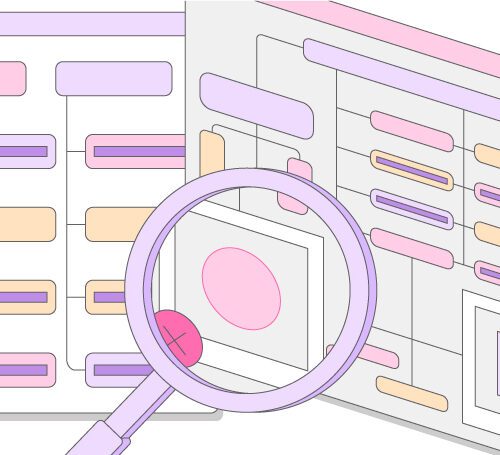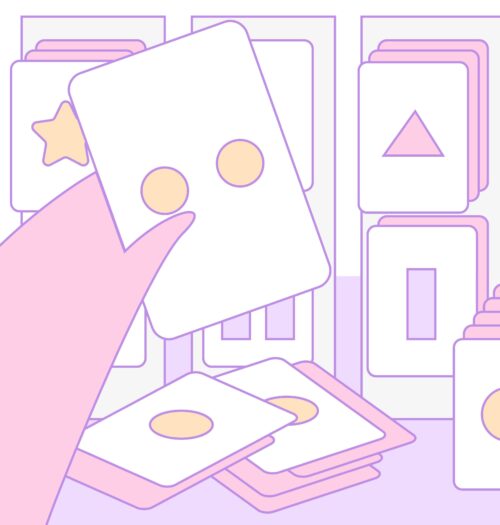🎁 Free 30-day publishing fees on Pay-As-You-GO. Get 15% off when recruiting from the UserQ Panel, with code HELLO15

Deciding which research method to use at what point along the design process can be confusing. So to help you get the most out of your research, we sat down with our Senior Product Designer, Bashar, to get a better understanding of what each methodology is used for and when they’re most effectively utilised. Here’s a summary of what he had to say…
Tree tests
What are they for?
The purpose of a tree test is to test your product’s information architecture, evaluating how users respond to your current navigation and labelling, and where any confusion might lie. Tree tests find out how easily and successfully people found answers to the tree test tasks – and how quickly they found them.
How do they work?
Tree testing is split into two main components: the tree and the tasks. The tree is a hierarchical text-only version of your website (what participants will attempt to navigate) and the tasks themselves are a series of scenarios to implement.
Let’s say you’re an electronics store, you might ask: “If you needed to buy computer gadgets for your friend, where would you search?”
When to use them…
Usually in the beginning of the UX design process but after you’ve already drafted how the product information will be structured. Once you’ve got the feedback, you then make any adjustments according to what labels were confusing or what was hard to find.
Card sorting
What are they for?
The purpose of card sorting is to help you create groupings and categories of an information architecture/site map and choose suitable labels. It gives you a sense of how people think, and how they might naturally group things together.
Think of card sorting as the opposite of tree testing. You’re not presenting users with an existing group structure like tree tests do. Instead, you’re asking them to organise the information themselves according to what makes sense to them. You might even get some bright ideas that are better than your own.
How do they work?
Card sorting involves a set of cards, each representing a topic, item or product functionality. Participants are then tasked with sorting the cards into categories or groups that make sense to their own natural way of sorting them.
Let’s say you’re designing the website of a UX agency like our sister company, Digital of Things. You might have cards (or pages) like ‘Product Strategy’, ‘Design’, or ‘FAQs’ that need to be sorted into broader categories like ‘Services’, ‘Solutions’, and ‘Resources’.
When to use them…
Usually earlier on in the UX design process when you’re yet to finalise how the information architecture will be structured. You might have a foundation in mind, but you’re also open to ideas on how categories and labels can be improved.
Preference tests
What are they for?
The purpose of preference tests is to find out which existing designs your users prefer over others. Typically, preference tests measure visual appeal (logos, graphics, colour schemes, font, etc.) however they also come in handy for getting insights into general thoughts and opinions of your brand and your product’s overall message.
How do they work?
Preference tests involve participants being shown multiple design options (usually between two to five) and then asked which one(s) they prefer. Our UserQ platform also allows you to not just ask users what designs they prefer, but also ask questions that help grasp in-depth reasons why.
When to use them…
Usually during the ongoing design process when you’ve already drafted two or more designs/ prototypes for users to look at. We recommend using them as early on as possible to ensure you’ve got plenty of time to make amendments, based on the feedback.
Surveys
What are they for?
The purpose of a survey is to test your product hypotheses on a larger sample size or find out what users think about your product/ brand/research topic. Getting their individual opinions and feedback (positive or negative) helps you understand your target audience better: what they need and want from you.
How do they work?
Participants answer any questions you want to ask them, including both open and closed-style questions to gain a mix of qualitative and quantitative data. Surveys might seem simple, but they require skills to ask the right questions in the right form and use a proper question type (e.g. likert scale or rating scale). There’s often branching/logic involved, which UserQ has a function for.
When to use them…
Surveys are a super versatile remote research method and can come in handy at any stage of the design process. You can carry out a survey strategically at the very beginning to discover more about your target market and what they generally think about your brand – or you might conduct a survey at the very end to get feedback on your final prototype.
5 second tests
What are they for?
The purpose of a 5 second test is to understand how users perceive your designs and your brand. They’re most commonly used to measure first impressions on specific design elements such as logos, images, graphics, fonts, etc.
How do they work?
You show participants a design for five seconds only, then ask them a series of questions based on their initial reactions.
You might ask questions like: “What information can you recall?” or “How did the design make you feel?”
When to use them…
Usually during the ongoing design process to guide your decisions and help you make more informed choices based on what users think and feel about your brand and its products.
We also recommend re-running 5 second tests with edited and amended designs. That way you can keep levelling up until you’re 100% happy with your finished product.
First click tests
What are they for?
The purpose of a first click test is to test the findability of your product’s information/functionality and how easy (or difficult) it is for users to navigate. They help you get some clarity on what pathways users take when searching for certain things.
How do they work?
First click tests involve presenting users with your product prototype and giving them a task to do. Let’s say it’s your homeware brand…you might ask your participants to look at your website and purchase mirrors.
By knowing where users first click, you can find out where their attention tends to focus and what product elements (buttons, banners, and category labels) might be improving or interfering with the user experience.
When to use them…
Usually towards the end of the design process when you want to test the drafts you’ve already come up with. However, you can carry out the test at any stage in order to guide decision-making moving forward.
Final thoughts
What remote research methodology is best to use and when, all depends on the objective you’re trying to solve. While card sorting and surveys are best for earlier research – when you’re open to new ideas and still coming up with plans and solutions, the others are most effective later on when testing your existing drafts and prototypes with valuable customer feedback.
Check out our full methodology guides to find out more about how to conduct and analyse our selection of remote research methods.
Related Post

Tree testing guide: How to
Want to build a fully functional tree test the easy way? Here at UserQ, we’ve got the tools you need

Tree testing guide: Analyse tree
You’ll have access to the results as soon as the tree test is published. The findings of your test show

Card sorting guide: How to
Want to build simple and easy-to-use card sorting tests? You can with UserQ. Our pay-as-you-go user testing platform allows you
Subscribe to our
product newsletter!
Receive emails about UserQ updates, new features,
offers and latest trends.


